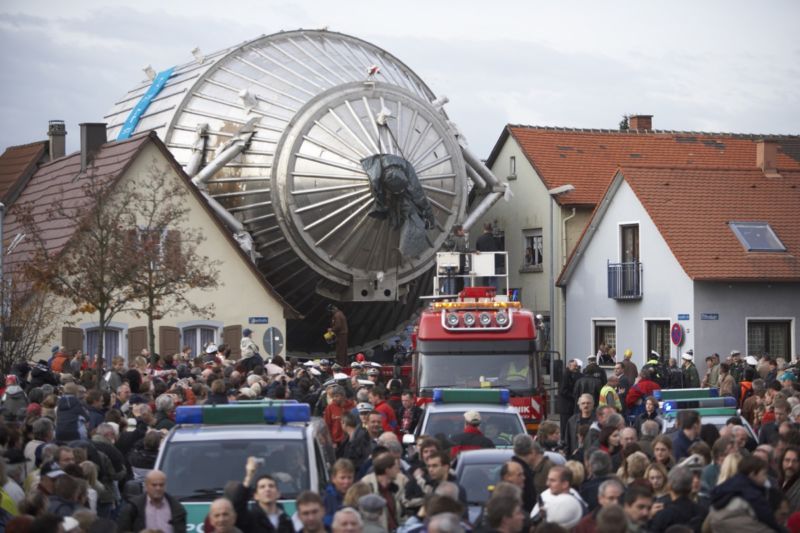Weighing in: Physicists cut upper limit on neutrino’s mass in half

Enlarge / The spectrometer for the KATRIN experiment, as it works its way through the German town of Eggenstein-Leopoldshafen in 2006 en route to the nearby Karlsruhe Institute of Technology. (credit: Karlsruhe Institute of Technology)
Isaac Asimov dubbed neutrinos "ghost particles." John Updike immortalized them in verse. They've been the subject of several Nobel Prize citations, because these weird tiny particles just keep surprising physicists. And now we have a much better idea of the upper limit of what their rest mass could be, thanks to the first results from the Karlsruhe Tritium Neutrino experiment (KATRIN) in Germany. Leaders from the experiment announced their results last week at a scientific conference in Japan and posted a preprint to the physics arXiv.
"Knowing the mass of the neutrino will allow scientists to answer fundamental questions in cosmology, astrophysics, and particle physics, such as how the universe evolved or what physics exists beyond the Standard Model," said Hamish Robertson, a KATRIN scientist and professor emeritus of physics at the University of Washington. "These findings by the KATRIN collaboration reduce the previous mass range for the neutrino by a factor of two, place more stringent criteria on what the neutrino's mass actually is, and provide a path forward to measure its value definitively."
The ghostly particles are devilishly hard to detect because they so rarely interact with other particles, and when they do, they only interact via the weak nuclear force. Most neutrino hunters bury their experiments deep underground, the better to cancel out noisy interference from other sources, notably the cosmic rays continually bombarding Earth's atmosphere. The experiments usually require enormous tanks of liquid-dry-cleaning fluid, water, heavy water, mineral oil, chlorine, or gallium, for example, depending on the experimental setup. This increases the chances of a neutrino striking one of the atoms in the medium of choice, triggering the decay process. The atom changes into a different element, emitting an electron in the process, which can be detected.
Read 11 remaining paragraphs | Comments